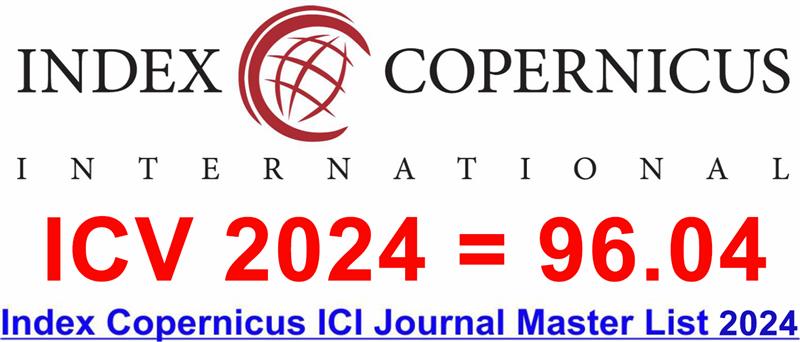Expanding Value of Geographic Information Systems in Renewable Energy
DOI:
https://doi.org/10.60072/ijeissah.2023.v1i03.006Abstract
This chapter presents an overview of the research focus pertaining to the enhancement of the value of Geographic Information Systems (GIS) within the context of renewable energy. This paper elucidates the importance of Geographic Information Systems (GIS) as a potent instrument for the purpose of sustainable energy planning. Additionally, it underscores the current deficiencies in research pertaining to the seamless integration of GIS with renewable energy applications. The subsequent chapter provides a thorough examination of pertinent scholarly works, delving into the progression of Geographic Information System (GIS) technology and its utilization within the renewable energy industry. This paper examines a range of research endeavours that have employed Geographic Information Systems (GIS) in the context of renewable energy projects. The third chapter provides a comprehensive overview of the proposed methodology, which encompasses the integration of spatial analysis, data modelling, economic assessment, real-time data integration, and stakeholder engagement within Geographic Information Systems (GIS) frameworks for the purpose of renewable energy applications. Chapter five presents the outcomes of applying the GIS-based methodology in renewable energy. It discusses the results obtained from spatial modeming, economic feasibility assessments, and real-time data integration. The final chapter concludes the study by summarizing the contributions made to the field of GIS in renewable energy. It highlights the bridging of research gaps and the practical value of GIS tools. The chapter also suggests potential areas for future research, emphasizing the continuous evolution of GIS technology and its potential in fostering sustainable energy transitions.
Keywords:
Availability, Design and Construction, Environment, Geographic Information Systems (GIS), Increasingly, MaintenanceReferences
Aboelnour, M., & Engel, B. A. (2018). Application of Remote Sensing Techniques and Geographic Information Systems to Analyze Land Surface Temperature in Response to Land Use/Land Cover Change in Greater Cairo Region, Egypt. Journal of Geographic Information System, 10(01), 57–88. ORG. https://doi.org/10.4236/jgis.2018.101003
Al Garni, H. Z., & Awasthi, A. (2017). Solar PV power plant site selection using a GIS-AHP based approach with application in Saudi Arabia. Applied Energy, 206, 1225–1240. SCIENCE DIRECT . https://doi.org/10.1016/j.apenergy.2017.10.024
Avila, S. (2018). Environmental justice and the expanding geography of wind power conflicts. Sustainability Science, 13(3), 599–616. springers. https://doi.org/10.1007/s11625-018-0547-4
Bai, H., Li, Z., Guo, H., Chen, H., & Luo, P. (2022). Urban Green Space Planning Based on Remote Sensing and Geographic Information Systems. Remote Sensing, 14(17), 4213. mdpi. https://doi.org/10.3390/rs14174213
Di Grazia, S., & Tina, G. M. (2023). Optimal site selection for floating photovoltaic systems based on Geographic Information Systems (GIS) and Multi-Criteria Decision Analysis (MCDA): a case study. International Journal of Sustainable Energy, 1–23. tandfonline. https://doi.org/10.1080/14786451.2023.2167999
Feldgarden, M., Brover, V., Haft, D. H., Prasad, A. B., Slotta, D. J., Tolstoy, I., Tyson, G. H., Zhao, S., Hsu, C.-H., McDermott, P. F., Tadesse, D. A., Morales, C., Simmons, M., Tillman, G., Wasilenko, J., Folster, J. P., & Klimke, W. (2019). Validating the AMRFinder Tool and Resistance Gene Database by Using Antimicrobial Resistance Genotype-Phenotype Correlations in a Collection of Isolates. Antimicrobial Agents and Chemotherapy, 63(11). ASM. https://doi.org/10.1128/aac.00483-19
Global renewable energy consumption 2020. (2023, February 8). Statista. https://www.statista.com/statistics/274101/world-renewable-energy-consumption/
Hill, D. T., & Larsen, D. A. (2023). Using geographic information systems to link population estimates to wastewater surveillance data in New York State, USA. PLOS Global Public Health, 3(1), e0001062. ORG. https://doi.org/10.1371/journal.pgph.0001062
Jayarathna, L., Kent, G., O’Hara, I., & Hobson, P. (2020). A Geographical Information System based framework to identify optimal location and size of biomass energy plants using single or multiple biomass types. Applied Energy, 275, 115398. sciencedirect. https://doi.org/10.1016/j.apenergy.2020.115398
Kirby, R. S., Delmelle, E., & Eberth, J. M. (2017). Advances in spatial epidemiology and geographic information systems. Annals of Epidemiology, 27(1), 1–9. SCIENCE DIRECT. https://doi.org/10.1016/j.annepidem.2016.12.001
Liu, X., Wang, X., Wright, G., Cheng, J., Li, X., & Liu, R. (2017). A State-of-the-Art Review on the Integration of Building Information Modeling (BIM) and Geographic Information System (GIS). ISPRS International Journal of Geo-Information, 6(2), 53. MDPI. https://doi.org/10.3390/ijgi6020053
Negassa, M. D., Mallie, D. T., & Gemeda, D. O. (2020). Forest cover change detection using Geographic Information Systems and remote sensing techniques: a spatio-temporal study on Komto Protected forest priority area, East Wollega Zone, Ethiopia. Environmental Systems Research, 9(1). SPRINGERS. https://doi.org/10.1186/s40068-020-0163-z
Oki, S., Ohta, T., Shioi, G., Hatanaka, H., Ogasawara, O., Okuda, Y., Kawaji, H., Nakaki, R., Sese, J., & Meno, C. (2018). Ch IP ‐Atlas: a data‐mining suite powered by full integration of public Ch IP ‐seq data. EMBO Reports, 19(12). NCBI. https://doi.org/10.15252/embr.201846255
Smith, C. D., & Mennis, J. (2020). Incorporating Geographic Information Science and Technology in Response to the COVID-19 Pandemic. Preventing Chronic Disease, 17. NCBI. https://doi.org/10.5888/pcd17.200246
Song, Y., Wang, X., Tan, Y., Wu, P., Sutrisna, M., Cheng, J., & Hampson, K. (2017). Trends and Opportunities of BIM-GIS Integration in the Architecture, Engineering and Construction Industry: A Review from a Spatio-Temporal Statistical Perspective. ISPRS International Journal of Geo-Information, 6(12), 397. mdpi. https://doi.org/10.3390/ijgi6120397
Supriadi, A., & Oswari, T. (2020). Analysis of Geographical Information System (GIS) Design Aplication in the Fire Department of Depok City. Technium Social Sciences Journal, 8, 1. ORG. https://heinonline.org/HOL/LandingPage?handle=hein.journals/techssj8&div=2&id=&page=
























